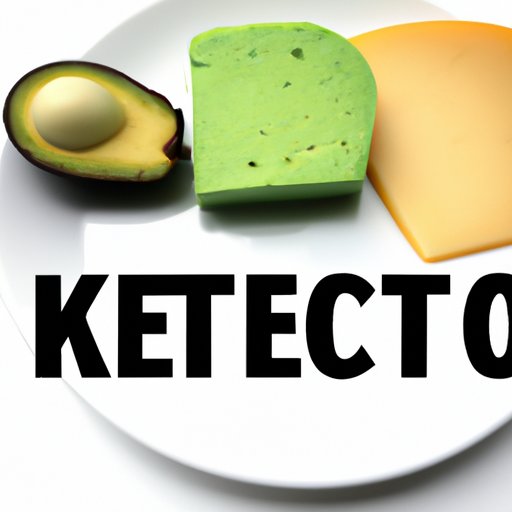Introduction
Are you tired of following diets that do not lead to significant results? Are you interested in a diet that not only leads to weight loss but also improves your health? Then the ketogenic diet may be for you! In this comprehensive guide, we will provide you with all the information you need to know about this diet to see if it’s right for you.
The Ketogenic Diet: A Beginner’s Guide to Weight Loss and Improved Health
So, what exactly is a ketogenic diet? Simply put, it is a low-carb, high-fat diet that puts your body into a metabolic state called ketosis. In this state, your body burns fat for energy instead of carbohydrates, leading to weight loss and improved health markers such as blood sugar and cholesterol levels. The diet typically includes high-fat foods such as meat, fish, nuts, and healthy oils, while limiting carbohydrates to 20-50 grams per day.
The ketogenic diet has shown promising results in studies for weight loss, as well as possible benefits for conditions such as epilepsy, acne, and even cancer. Many people also report increased energy and mental clarity while on the diet.
Getting started on the ketogenic diet may seem daunting at first, but with some planning and preparation, it can be an effective and sustainable lifestyle change. Here are some tips to get you started:
- Focus on eating healthy fats such as avocados, olive oil, and nuts
- Avoid refined carbs such as sugar and white bread
- Include low-carb vegetables such as leafy greens, broccoli, and cauliflower
- Track your macronutrients using apps or websites
- Stay hydrated and consume enough electrolytes such as sodium and magnesium
Ketogenic Diet vs. Other Low-Carb Diets: What’s the Difference?
One of the most common questions people have about the ketogenic diet is how it differs from other low-carb diets such as Atkins or South Beach. While all of these diets restrict carbohydrates, there are a few key differences.
First, the ketogenic diet is much higher in fat than other low-carb diets, with a focus on healthy sources of fat such as avocados, nuts, and fatty fish. Second, the ketogenic diet limits carbohydrates very strictly, to around 20-50 grams per day, while other low-carb diets allow for more flexibility in carb intake. Finally, the ketogenic diet focuses on getting into ketosis, a metabolic state in which your body burns fat for fuel, while other low-carb diets may not have this specific goal in mind.
While all of these diets can lead to weight loss and health benefits, the ketogenic diet’s unique features may make it an effective choice for those seeking significant results.
Real Life Success Stories: How the Ketogenic Diet Changed People’s Lives
The best way to get a sense of how the ketogenic diet works in real life is to hear from others who have successfully used it to achieve their goals. Here are some success stories from individuals who have used the ketogenic diet:
- After years of struggling with her weight and trying various diets, Sarah discovered the ketogenic diet and lost 60 pounds in a year. She credits her success to being able to indulge in her favorite high-fat foods, which helped her feel satisfied and stick to the diet.
- John, a diabetic, was struggling to control his blood sugar levels. He switched to the ketogenic diet and found that his blood sugar levels stabilized, helping him avoid medication and improve his overall health.
- Julia, a busy mother of two, found the ketogenic diet to be a lifesaver for her family’s busy schedule. By planning and preparing meals ahead of time, she was able to save time and money while sticking to a healthy and sustainable diet.
If you’re interested in trying the ketogenic diet, it’s important to talk to your doctor first and get their advice on whether it is appropriate for you.
Keto-Friendly Meal Planning: Delicious and Nutritious Recipes for the Whole Family
Planning and preparing meals on the ketogenic diet can seem challenging at first, but there are many delicious and nutritious meal options available. Here are some ideas for keto-friendly meals that the whole family can enjoy:
- Egg-based breakfasts such as omelets or frittatas
- Meat-based dishes such as roasted chicken or steak with a side of vegetables
- Seafood such as salmon or shrimp served with a side of sautéed spinach or kale
- Vegetarian options such as cauliflower rice or stir-fried tofu with vegetables
- Desserts such as sugar-free cheesecake or keto-friendly ice cream
By planning ahead and keeping healthy ingredients on hand, you can make meal planning and preparation a breeze.
Cautions and Concerns: Potential Risks and Limitations of the Ketogenic Diet
While the ketogenic diet can be an effective and safe way to lose weight and improve health markers, there are some potential risks to be aware of. These include:
- The “keto flu”, a temporary period of fatigue and mood changes as your body adjusts to ketosis
- Nutrient deficiencies if you are not careful to include a variety of healthy foods in your diet
- Dangerously high levels of ketones in the blood if not monitored carefully
- Possible negative effects on athletic performance due to lower glycogen stores in the muscles
To minimize these risks and ensure that the ketogenic diet is safe and effective for you, be sure to consult with your doctor, monitor your nutrient intake, and stay hydrated. It’s also important to avoid long-term strict adherence to the diet, as this can lead to health problems.
Conclusion
The ketogenic diet is an effective and sustainable way to lose weight and improve health markers. By understanding the basics of the diet, seeking advice from your doctor, and planning ahead, you can make the ketogenic diet work for you and your family.
